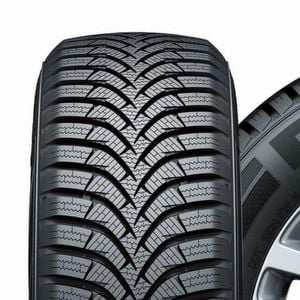Last Updated on 22.08.2024 by hrushetskyy
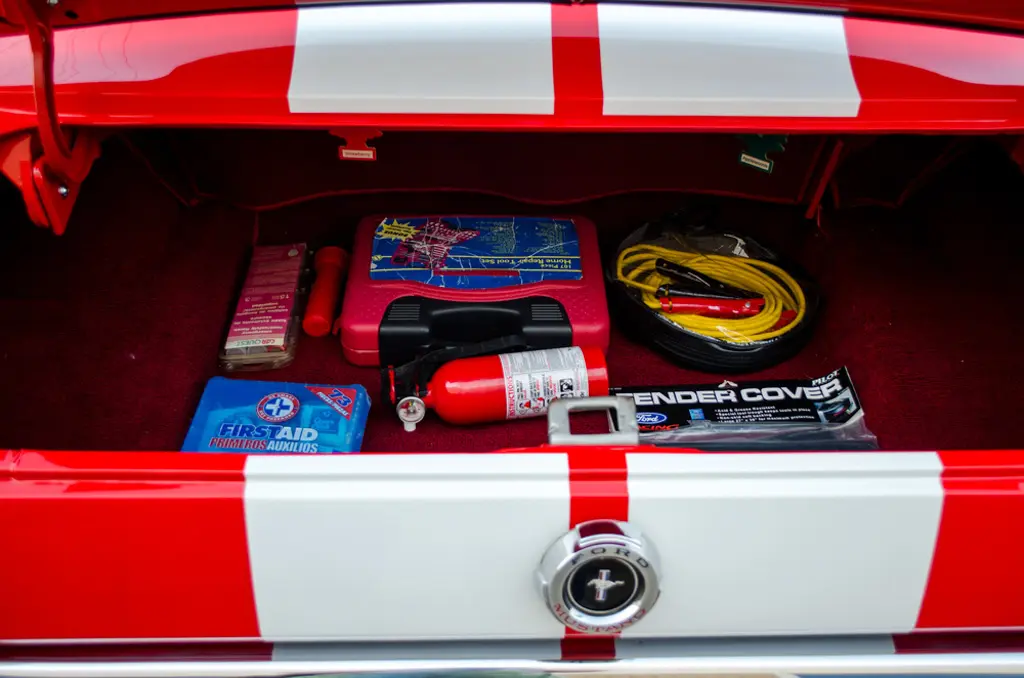
Download a List of essential items to keep in your car emergency kit and stay safe on the road!
Car Emergency Kit: 16 Essential Items That Can Become Your Lifesaver
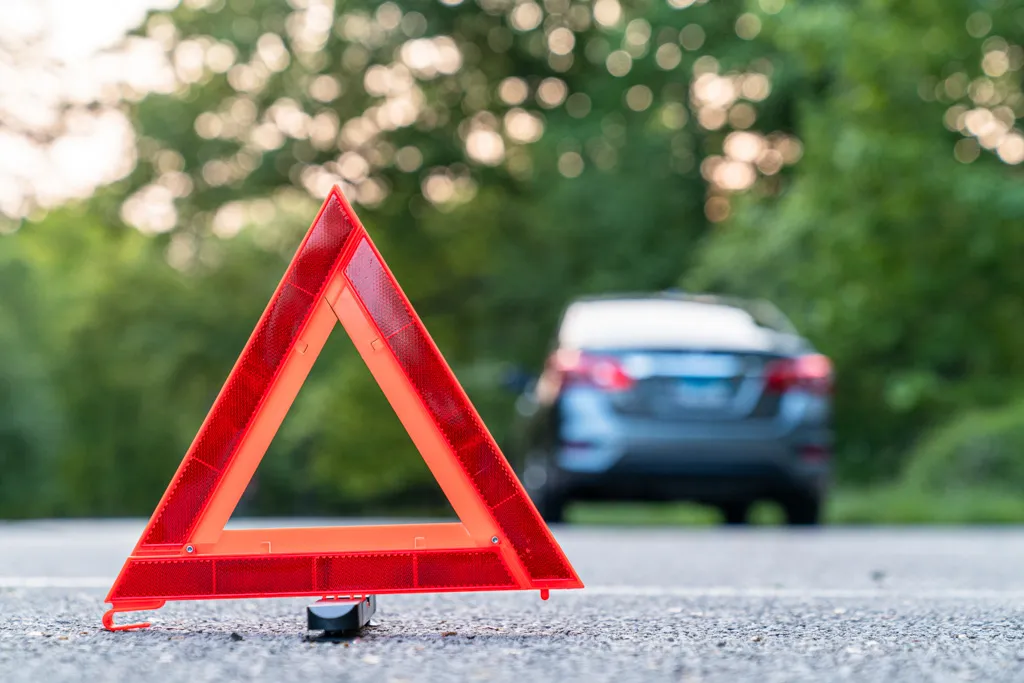
When it comes to a car emergency kit, the adage “better safe than sorry” couldn’t be more apt. A well-prepared kit is akin to a trusted co-pilot, ready to assist at a moment’s notice. We don’t know when something unexpected will happen on the road, and it can catch us in a familiar neighborhood or in the middle of nowhere with the same probability. In any of those cases, an emergency car kit is your insurance, protecting you from the worst consequences. With it, you’re prepared for almost anything, whether a flat tire, a winter storm, or a regional emergency.
Emergency kits: shocking statistics
Apparently, not all Americans find an emergency car kit important. According to comprehensive research by Finance Buzz, only 58% of U.S. drivers keep emergency kits in their cars, with 31% considering themselves “fully prepared” for bad weather conditions and 27% “not sufficiently prepared.” Male drivers also seem to be more responsible when it comes to forward-thinking: 67% of male respondents equip their cars with emergency kits, and only 49% of women do so. Some statistics pose harsher figures, stating that 90% of drivers don’t keep emergency kits in their cars.
Well. Even fifty-fifty is not a very solid gamble when it comes to safety on the road.
The weather situation on the planet has changed. Severe weather events almost doubled (7,348) from 2000 to 2019 compared to 1980 to 1999 (4,212). Do you remember the unexpected snowstorm that paralyzed I-95 in Virginia, trapping hundreds of drivers on a highway for over 24 hours? Hundreds of similar accidents have much worse endings, and national media do not cover them. What would you do in a similar situation, not equipped for an emergency, not on a popular highway but somewhere in the woods? Think about it.
Comprehensive car emergency kit checklist
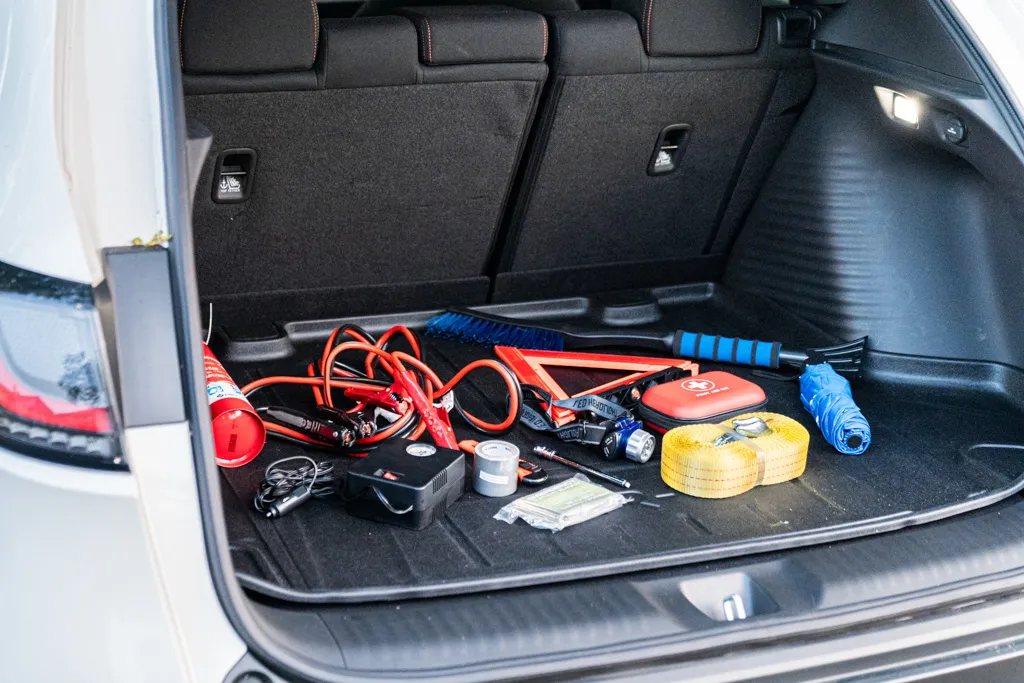
Don’t let the chance decide whether you and your family will be safe in case of an accident, in inclement weather, or in “innocent” heat while changing a flat. The following checklist of 15 essential items will ensure you’re equipped to handle a variety of roadside emergencies—from basic repairs to personal safety and sustenance. The National Safety Council of America and the U.S. Department of Homeland Security recommend always keeping these items in the car. We’ve enhanced the basic recommendations with our expert experience. Armed with these tools, you can confidently face any challenge—be it a dead battery, sudden storm, or unexpected detour.
1. First aid kit

A well-stocked first aid kit can be a literal lifesaver in the event of an accident or sudden illness. It’s the cornerstone of any car emergency kit, with the power to treat minor injuries and prevent infections until professional help arrives. Ensure your kit includes essentials like bandages, antiseptic wipes, gauze, adhesive tape, scissors, pain relievers, and additional items such as tweezers, a thermometer, and antiseptic ointment for comprehensive preparedness.
Remember that a good first aid kit provides first aid supplies and assures immediate care in critical moments.
2. Portable jump starter
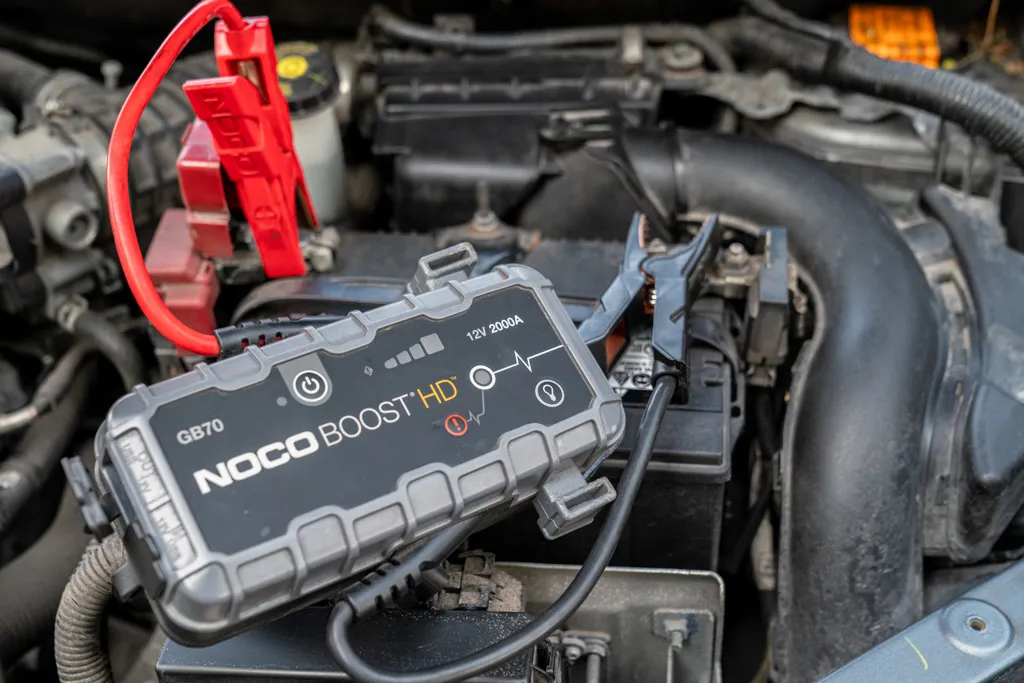
A portable jump starter revives dead battery without needing another car, allowing you to quickly restore power and get back on the road with minimal fuss. Not only is it more convenient than traditional jumper cables, but it also offers protection for your vehicle’s delicate electronics.
A portable jump starter, compact, easy to use, and versatile enough to start various vehicles, is undeniably essential for any car emergency kit.
3. Flashlight and extra batteries
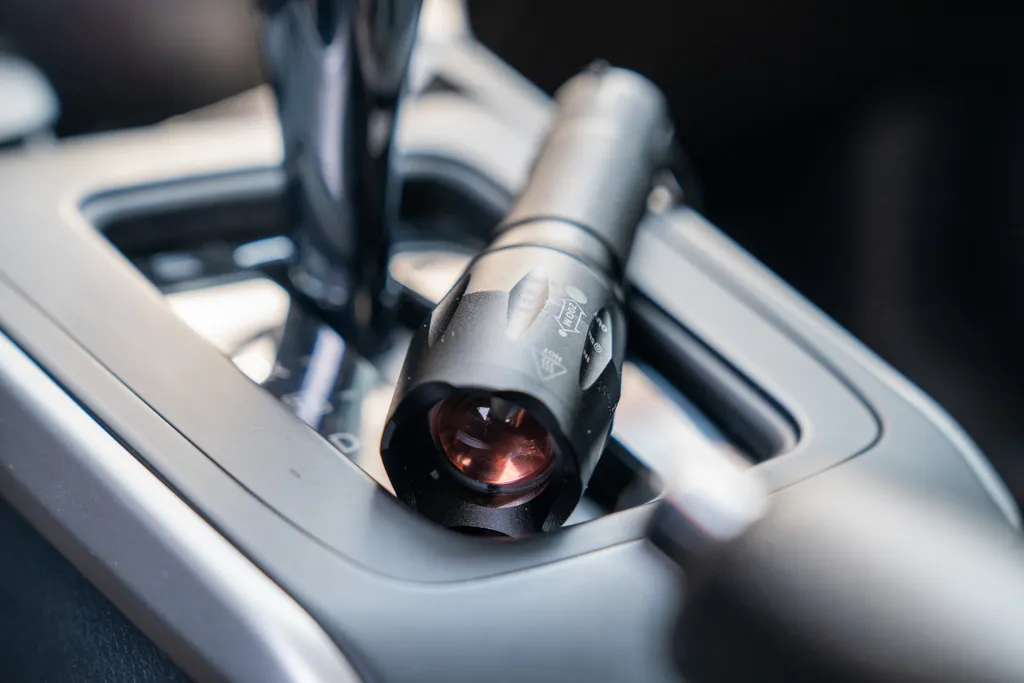
A reliable flashlight becomes your ally when darkness descends, casting light on engine troubles or illuminating your path to safety. Choosing one that won’t drain your car’s battery and keeping extra batteries on hand ensures it’s always ready for action.
Whether checking your vehicle at night or signaling for help, a flashlight is an indispensable tool that no car emergency kit should be without.
4. Flat tire repair kit

A flat tire can abruptly stop your journey. However, with a flat tire repair kit—complete with a tire sealant, tire gauge, and small air compressor—you can address punctures right on the spot.
Don’t forget the essentials: a spare tire, tire iron, and jack should also be part of your arsenal for full tire-related emergency coverage.
5. Duct tape
Duct tape is the ultimate tool. It can serve multiple purposes, including:
- bandaging a large wound
- insulating hot car parts during repairs
- temporarily containing engine leaks
- serving as an emergency seat belt
- holding a muffler or bumper in place
- forming a makeshift cup for water
Yellow or red duct tape can even act as temporary taillights.
6. Tow strap

A sturdy tow strap is your lifeline when you’re stuck in mud or snow. It enables another vehicle to pull you out. This simple and powerful piece of equipment can transform a helpless situation into a manageable one.
Make sure to include one in your kit for those times when traction fails and a push from a friendly passerby is all you need to get moving again.
7. Fire extinguisher
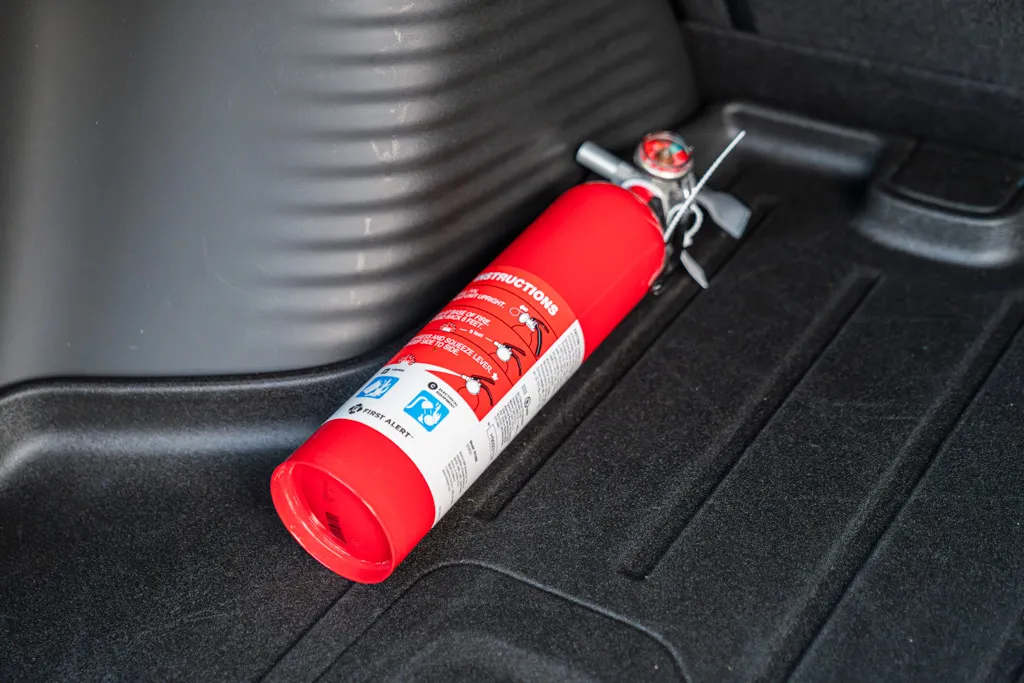
In the unlikely yet alarming event of a vehicle fire, a fire extinguisher can prevent a minor flame from turning into a full-blown inferno, protecting both you and your vehicle from significant damage.
Its presence in your car emergency kit isn’t just a good idea—it’s a non-negotiable safeguard.
8. Water and non-perishable food
The prospect of being stranded without sustenance is harrowing. Hence, your car emergency kit must include water and non-perishable food items. These supplies maintain your strength and mental clarity while you wait for rescue.
Opt for energy bars and emergency water pouches with long shelf life and can withstand temperature fluctuations. If possible, keep a water supply in your trunk: one gallon per person per day for three days.
9. Multi-tool
It is a compact and versatile multi-tool, the Swiss Army knife equivalent of a car emergency kit. Its various functions can significantly alter the outcomes during roadside repairs or survival scenarios.
Its inclusion means you’re never without the right tool for the job, no matter how unexpected the task at hand may be. In an accident, a seat belt can jam, or car doors become unusable. A seat belt cutter and window breaker tool can help passengers escape, especially if the risk of a fire is present.
10. Navigation tools
In our digitally-dominated age, the reliability of traditional navigation tools can be easily overlooked. However, a physical map, a compass, and a portable GPS device become invaluable assets when technology fails or is inaccessible. They give a sense of direction and security, guiding you to safety when electronic devices fail.
11. Climate-control items
Adverse weather conditions can exacerbate roadside emergencies. Therefore, it’s important to include climate-control items in your kit. Some essential items to consider are:
- Blankets
- Hand warmers
- Sunscreen
- Antifreeze
- Windshield washer fluid—keep in the car at all times
These items ensure your comfort and safety, regardless of whether you’re waiting out a storm or enduring a heatwave.
12. Reflective triangles
Visibility is crucial in any roadside emergency, especially at night or in poor weather. Reflective triangles are an immediate signal for oncoming traffic, enhancing safety and preventing potential accidents. These simple yet effective tools can significantly speed up the process of being noticed and aided. Some conscious drivers also keep a reflective vest.
13. Road flares
Road flares, like beacons in the night, draw attention to your position and signal for help in low-visibility situations. Their bright, unmistakable glow reassures you when you’re stranded, making it easier for rescue crews or other drivers to find you and provide assistance.
14. Cell phone charger
Communication is a lifeline during emergencies. A cell phone charger ensures that your phone, an essential tool for calling for help, remains charged and operational.
Portable power banks offer additional flexibility, providing a backup power source when your car’s battery is dead, or you need a charger.
15. Basic tool kit
Minor vehicle repairs don’t have to escalate into major issues if you’re equipped with a basic tool kit. Screwdrivers, pliers, and wrenches are the trifecta of tools that can help you tackle a range of small fixes on the go.
With these in your car emergency kit, you’re prepared to address unexpected repairs swiftly and safely.
16. Personal safety items
Personal safety should always be a priority. Including items like a whistle for attracting attention and pepper spray for self-defense in your car emergency kit ensures an additional layer of security. These tools enable you to signal for help or protect yourself in precarious situations.
Seasonal adjustments for your car emergency kit
As the seasons change, so should the contents of your car emergency kit. Sweltering summers and freezing winters present unique challenges, necessitating different tools and supplies.
By tailoring your kit to the current climate, you’ll have the right resources at hand, whether you’re scraping ice off your windshield or shielding yourself from the sun’s intense rays.
Winter essentials
Winter’s chill brings a host of potential hazards. To combat the cold, your emergency kit should include items such as:
- an ice scraper
- a snow brush
- extra warm clothing
- hand warmers
- a blanket
And don’t forget about an antifreeze/coolant! If your car overheats too badly, it can crack your engine. Be sure to have coolant to refill your radiator when needed. With these items, you have a defense against the bone-chilling temperatures that can quickly turn a simple breakdown into a dangerous situation. We recommend checking the National Weather Service website for more information.
Summer essentials
The heat of summer demands its own set of emergency items. Sunscreen, extra water, and a portable fan are summer kit staples, helping you avoid dehydration and heatstroke while waiting for help.
Don’t forget a hat and bug spray, which can provide additional comfort during an unexpected roadside stop.
Regular maintenance of your car emergency kit
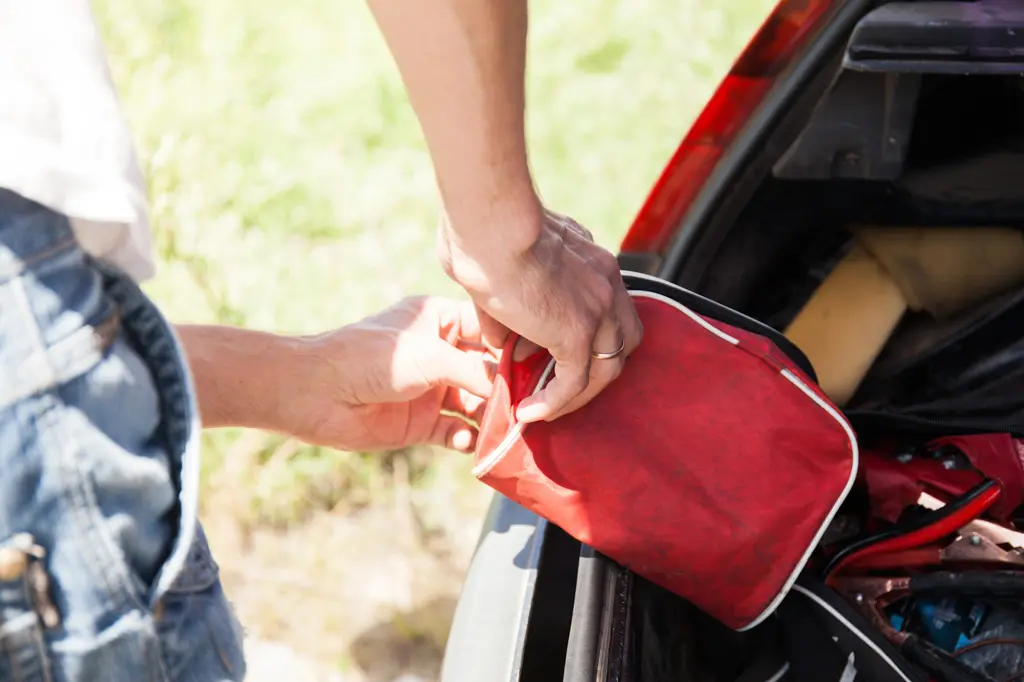
A car emergency kit is only as good as its readiness when an actual emergency strikes. Regular maintenance ensures that every item in your kit is functional, up-to-date, and ready to serve its purpose when you need it most.
From checking expiry dates to replenishing supplies, let’s explore how to keep your kit in top condition.
Checking expiry dates
Every item in your car emergency kit has a shelf life, and keeping track of it is important. Periodically check the expiry dates on perishable items like food, water, and medical supplies to ensure their effectiveness in times of need.
Maintaining a list within your kit is good practice to quickly identify and replace items nearing expiration.
Replenishing supplies
After any roadside emergency, it’s crucial to take stock of your car emergency kit and replenish any items that were used or have dwindled. This proactive step guarantees your kit remains complete and ready for the next unexpected event.
Timely replacement of these aid supplies means you won’t be caught off guard without essential items when needed.
Inspecting equipment
In addition to perishable items, the equipment in your emergency kit requires regular inspection. Here are some things to check:
- Look for any signs of wear and tear on tools
- Ensure batteries are charged
- Confirm that items like jumper cables and tow straps are in reliable working order.
This attention to detail can be the difference between a swift resolution and a prolonged ordeal during a roadside emergency.
Storing your car emergency kit
Proper storage of your car emergency kit is just as important as its items. Store your kit in a durable, waterproof container that’s easily identifiable and accessible in your vehicle.
By keeping your kit in the right place and in the right condition, you can ensure that your emergency supplies are ready to go when you need them most.
Choosing the right container
Select a container that’s sturdy enough to withstand the rigors of travel and bright enough to be easily spotted. Compartments or dividers can help you organize the contents, making it simpler to find what you need in a hurry. Remember, the goal is to protect your supplies from damage and ensure that they’re ready to use whenever an emergency arises.
Optimal placement
Finding the perfect spot for your emergency kit within your vehicle can make all the difference. The trunk is a common choice, but under the seat or in other storage compartments can also be suitable as long as the kit remains accessible.
It’s also wise to secure the kit to prevent it from shifting during travel, which could damage it or make retrieval difficult.
Why every driver needs a car emergency kit
No matter how new or well-maintained your vehicle is, emergencies can still occur. A car emergency kit is your first line of defense, providing the resources to address issues independently and safely.
From minor inconveniences to severe road mishaps, the presence of a car kit can significantly reduce the severity of roadside issues.
Safety benefits
The safety benefits of a car emergency kit cannot be overstated. The ability to handle situations like flat tires or dead batteries on your own can prevent minor setbacks from escalating into dangerous scenarios. This level of preparedness can save time, money, and potentially lives, making it an indispensable part of any vehicle’s equipment.
Peace of mind
The psychological assurance that comes with having a car emergency kit is invaluable. Knowing you’re equipped to face various situations reduces driving anxiety and allows you to focus on the journey rather than the potential hazards. This peace of mind is crucial to the driving experience, ensuring that you remain calm and collected, even when faced with unexpected challenges.
Helping others
A comprehensive emergency kit enables you to take care of yourself and assist others in need. Whether you’re providing first aid, helping to jump-start another car, or sharing your supplies, your preparedness can be a beacon of hope and support on the road. In moments of crisis, your kit can strengthen community bonds and camaraderie among travelers.
DIY vs. pre-made car emergency kits
When it comes to car emergency kits, you have two main options: assemble your own (DIY) or buy a pre-made kit. Both options have advantages, and your final choice depends on your personal preference, needs, and the time you’re willing to invest in preparation.
Customization options
Building your own car emergency kit allows for customized catering to your needs. You can select familiar items and tailor the contents to your driving habits and regional conditions. Going the DIY route may be the best option for those with specific medical requirements or who prefer higher-quality tools than those typically found in pre-made kits.
Convenience of pre-made kits
Pre-made car emergency kits are great for those seeking an immediate and hassle-free solution. These kits come ready to use and often include a well-thought-out selection of items to cover a range of common emergencies. While they may not offer the same level of customization, they’re a convenient and efficient way to ensure you have the basics covered.
Preparing for roadside emergencies
Preparedness for roadside emergencies goes beyond just having the right tools. It involves:
- Knowing how to use these tools
- Having a contingency plan
- Understanding basic troubleshooting
- Recognizing vehicle warning signs
- Maintaining your car
These steps can significantly mitigate the risk of emergencies.
Vehicle maintenance
Regular vehicle maintenance is the foundation of roadside emergency preparedness. By keeping up with scheduled services and promptly addressing dashboard warnings, you can prevent many common issues that lead to roadside emergencies.
Maintaining the health of your vehicle’s vital components, such as the battery, brakes, and tires, is critical for ensuring that your car remains reliable and safe.
Emergency contacts
In an emergency, having the right contacts at your fingertips can expedite assistance and provide peace of mind. Keep a list of essential numbers, such as roadside assistance, family members, and your mechanic, within easy reach. Whether stored in your phone or kept as a hard copy in your glove compartment, these contacts can be your lifeline when you need help the most.
A car emergency kit is more than just a collection of items; it’s a crucial component of responsible vehicle ownership and a testament to your preparedness on the road. By equipping yourself with the right tools and knowledge, you can handle most roadside emergencies with confidence. Let this guide inspire you to take action and empower you with the peace of mind that comes from being prepared.
Download the car emergency kit checklist.
Frequently Asked Questions
What should I include in a winter car emergency kit?
Ensure your winter car emergency kit includes essentials like an ice scraper, gloves, blankets, nonperishable foods, water, and a first aid kit to stay safe and comfortable during cold weather. A flat tire repair kit and a spare tire must always be in your trunk.
How often should I check the items in my car emergency kit?
At least once a year. Check for expired items, replenish used supplies, and ensure all equipment is in good working condition. This will help you be prepared for any unexpected situations on the road.
Can I use a pre-made car emergency kit, or should I assemble one myself?
Both options are viable. Pre-made kits offer convenience and are ready to use immediately, while a DIY kit allows for customization to fit your specific needs and preferences. Ultimately, the choice depends on your personal preferences and requirements.
Where is the best place to store my car emergency kit?
Store your car emergency kit in a secure, easily accessible location, such as the trunk or storage compartment. Make sure it won’t move around during travel and can be quickly reached in an emergency.
Are there any non-traditional items that could be useful in a car emergency kit?
Consider adding non-traditional items such as a signal mirror, multi-functional knife, fishing kit, cordage, and a lighter to your car emergency kit for added survival and signaling capabilities during emergencies or survival situations.
Share the Knowledge
